Shared services: the role of technology
- Details
The number of local authority and other public sector legal teams that are considering a shared services arrangement has grown rapidly in recent months. Elizabeth Miles looks at some of the IT issues that need to be considered if you are to enjoy a successful transition.
Shared services partnerships are a hot topic at the moment – not least among our clients. A number of our public sector legal teams adopted these arrangements some time ago in order to achieve savings, but as the pressure on public services mounts, more and more organisations are joining them.
Case Management solutions can do much to assist with successful shared service delivery, but there are plenty of decisions to be made at the outset to ensure that your software of choice can properly support your activities. Here are eight pointers for consideration when consolidating two or more case management systems. It is likely that case management information will be consolidated into one database, which will need to be configured to meet the wider business requirements of the shared service.
Lexcel
The Law Society (England and Wales) Lexcel Standard provides an excellent overview of what needs to happen in a well run legal practice. Many local government legal teams already have the standard, so they are starting from a good place.
Whether or not you have accreditation it is worth using the standard as a checklist of things to be considered in running a shared service, being mindful of how each area will be affected. The standard can be reviewed here. There is also a useful checklist.
If the participants already have Lexcel, how similar are the office manuals?
An early decision about which office manual will be adopted and how this needs to be adapted will provide pointers as to all areas that need to be consolidated, including practice management standards as well as case management and client care.
Examples of non case-type specific areas include lists of experts; client feedback; supervision, appraisals and HR procedures; training and CPD policies; library resources (which will possibly be increasingly online with split-site services and home working policies) and documents.
Branding
What is the legal status of the shared service and how will this be reflected on the electronic stationery? Will email disclaimers change? Will correspondence need to say “on behalf of”?
Changing stationery (either paper or electronic) takes some time, so it is worth planning ahead and adopting a mechanism that can easily expand if other authorities join the shared service at a later date.
Ideally this will be agreed at an early stage so that the shared knowledge bank of precedents can be adjusted to use the new branding.
Reports
I have included this consideration early, because you can’t get out of a system what doesn’t go in. It is always a good idea to have reporting needs in mind when configuring your case management system. Here are a few practical pointers.
First identify a set of favourite reports commonly used in each authority and compare them. Who uses these reports, and for what business reasons? Are there different management information requirements in the different authorities and if so what are the reasons for this?
Make a list of all the stakeholders who will need reports about the new service and identify what their management information requirements will be. Is there a requirement for new reports within the shared service – for instance reports that compare one participant with another?
Clients
By “Client” I mean the business unit that gives you instructions; to whom you are accountable for outcomes; that is authorised to spend one or more budgets; and that accepts responsibility for payment.
Some time recording systems (not Iken!) impose a constraint that the client and budget code are one and the same, but there is no reason in business terms why a business unit cannot give you instructions for cases to be charged to different budget codes.
In fact, for shared services it is even more important that the proper (business) definition of “client” is applied because lines of accountability, client care and service levels are likely to be more complex.
Do the participating entities have similar corporate structures and directorates? Which directorates and business units are authorised to give instructions? How will these be named within the shared case management system?
There may be a need to group clients together for reporting purposes. Within an authority this may be business units within a directorate, but with shared services there may be requirements to group clients together across authorities, for instance clients giving instructions on planning matters.
When thinking about client groups, it is also useful to consider client reporting requirements.
Case Types
Not all authorities use the same set of case types. An early review of the different lists of case types is recommended so that a single shared list can be defined.
Consider using a 3- or 4- letter code for each case type and applying this to associated precedents and diary templates, work processes. This approach makes it easier to manage the knowledge base by case type.
It is likely that there will be a need for additional reports focused on client demand and fee earner performance by case type (across authorities).
Teams
The team structures of the existing legal teams may well be different. An early decision about the team structure will mean that responsibility for case-level shared standards can be delegated sooner rather than later.
Will teams be split geographically or will they be physically near each other on the same site? Which team will take responsibility for which case types?
It is likely that there will need to be additional reports focused on team performance.
Know-how
With lawyers possibly dispersed across different sites it becomes even more important to define agreed common approaches to different area of work. Once teams and responsibilities are defined designated leaders can begin to consolidate different knowledge banks and legal processes.
This includes generic risk and escalation procedures, process steps; KPI’s, target and key dates; reminder points; steps; stages; payment points all organised by case type.
Charging and Billing
A review of the charging procedures (if any) will need to take place, and new charging mechanisms put into place. What will be the basic (default) charging rates for fee earners, and what will be their target hours?
Where different rates are to be applied to a type of work will these be the same for clients in each of the Authorities or will they differ? For instance, will a discount be applied if one authority generates more instructions than another?
What types of work will be subject to fixed fee rates and/or stage payments?
Consideration will need to be given to cheque requisitions and the recording of disbursements. Will these be drawn from the shared services budget and recharged, or directly from the clients’ budgets (and if so, within which corporate financial system)?
Care will need to be taken with budget and account codes for recharging, as these need to map onto what has been agreed about allocating and paying fees from different corporate financial systems.
Elizabeth was a founding Director and CEO of Iken Business. You can contact Iken's current CEO, Andrew Chester,
The number of local authority and other public sector legal teams that are considering a shared services arrangement has grown rapidly in recent months. Elizabeth Miles looks at some of the IT issues that need to be considered if you are to enjoy a successful transition.
Shared services partnerships are a hot topic at the moment – not least among our clients. A number of our public sector legal teams adopted these arrangements some time ago in order to achieve savings, but as the pressure on public services mounts, more and more organisations are joining them.
Case Management solutions can do much to assist with successful shared service delivery, but there are plenty of decisions to be made at the outset to ensure that your software of choice can properly support your activities. Here are eight pointers for consideration when consolidating two or more case management systems. It is likely that case management information will be consolidated into one database, which will need to be configured to meet the wider business requirements of the shared service.
Lexcel
The Law Society (England and Wales) Lexcel Standard provides an excellent overview of what needs to happen in a well run legal practice. Many local government legal teams already have the standard, so they are starting from a good place.
Whether or not you have accreditation it is worth using the standard as a checklist of things to be considered in running a shared service, being mindful of how each area will be affected. The standard can be reviewed here. There is also a useful checklist.
If the participants already have Lexcel, how similar are the office manuals?
An early decision about which office manual will be adopted and how this needs to be adapted will provide pointers as to all areas that need to be consolidated, including practice management standards as well as case management and client care.
Examples of non case-type specific areas include lists of experts; client feedback; supervision, appraisals and HR procedures; training and CPD policies; library resources (which will possibly be increasingly online with split-site services and home working policies) and documents.
Branding
What is the legal status of the shared service and how will this be reflected on the electronic stationery? Will email disclaimers change? Will correspondence need to say “on behalf of”?
Changing stationery (either paper or electronic) takes some time, so it is worth planning ahead and adopting a mechanism that can easily expand if other authorities join the shared service at a later date.
Ideally this will be agreed at an early stage so that the shared knowledge bank of precedents can be adjusted to use the new branding.
Reports
I have included this consideration early, because you can’t get out of a system what doesn’t go in. It is always a good idea to have reporting needs in mind when configuring your case management system. Here are a few practical pointers.
First identify a set of favourite reports commonly used in each authority and compare them. Who uses these reports, and for what business reasons? Are there different management information requirements in the different authorities and if so what are the reasons for this?
Make a list of all the stakeholders who will need reports about the new service and identify what their management information requirements will be. Is there a requirement for new reports within the shared service – for instance reports that compare one participant with another?
Clients
By “Client” I mean the business unit that gives you instructions; to whom you are accountable for outcomes; that is authorised to spend one or more budgets; and that accepts responsibility for payment.
Some time recording systems (not Iken!) impose a constraint that the client and budget code are one and the same, but there is no reason in business terms why a business unit cannot give you instructions for cases to be charged to different budget codes.
In fact, for shared services it is even more important that the proper (business) definition of “client” is applied because lines of accountability, client care and service levels are likely to be more complex.
Do the participating entities have similar corporate structures and directorates? Which directorates and business units are authorised to give instructions? How will these be named within the shared case management system?
There may be a need to group clients together for reporting purposes. Within an authority this may be business units within a directorate, but with shared services there may be requirements to group clients together across authorities, for instance clients giving instructions on planning matters.
When thinking about client groups, it is also useful to consider client reporting requirements.
Case Types
Not all authorities use the same set of case types. An early review of the different lists of case types is recommended so that a single shared list can be defined.
Consider using a 3- or 4- letter code for each case type and applying this to associated precedents and diary templates, work processes. This approach makes it easier to manage the knowledge base by case type.
It is likely that there will be a need for additional reports focused on client demand and fee earner performance by case type (across authorities).
Teams
The team structures of the existing legal teams may well be different. An early decision about the team structure will mean that responsibility for case-level shared standards can be delegated sooner rather than later.
Will teams be split geographically or will they be physically near each other on the same site? Which team will take responsibility for which case types?
It is likely that there will need to be additional reports focused on team performance.
Know-how
With lawyers possibly dispersed across different sites it becomes even more important to define agreed common approaches to different area of work. Once teams and responsibilities are defined designated leaders can begin to consolidate different knowledge banks and legal processes.
This includes generic risk and escalation procedures, process steps; KPI’s, target and key dates; reminder points; steps; stages; payment points all organised by case type.
Charging and Billing
A review of the charging procedures (if any) will need to take place, and new charging mechanisms put into place. What will be the basic (default) charging rates for fee earners, and what will be their target hours?
Where different rates are to be applied to a type of work will these be the same for clients in each of the Authorities or will they differ? For instance, will a discount be applied if one authority generates more instructions than another?
What types of work will be subject to fixed fee rates and/or stage payments?
Consideration will need to be given to cheque requisitions and the recording of disbursements. Will these be drawn from the shared services budget and recharged, or directly from the clients’ budgets (and if so, within which corporate financial system)?
Care will need to be taken with budget and account codes for recharging, as these need to map onto what has been agreed about allocating and paying fees from different corporate financial systems.
Elizabeth was a founding Director and CEO of Iken Business. You can contact Iken's current CEO, Andrew Chester,
Antisocial Behaviour Legal Officer
Governance Lawyer
Contracts Lawyer
Legal Director - Government and Public Sector
Regulatory/Litigation Lawyer
Lawyer (Planning and Regulatory)
Education Lawyer
Locum roles
 When needs trump all: a guide to navigating modest asset cases - 42 Bedford Row
When needs trump all: a guide to navigating modest asset cases - 42 Bedford Row
05-12-2025
Online (live)
 Planning, Property and Power Webinar Series: challenging grid connection decisions - Landmark Chambers
Planning, Property and Power Webinar Series: challenging grid connection decisions - Landmark Chambers
05-12-2025 10:00 am
Online (live)
 HMPL Building Blocks: Law and Procedure Following Death of a Tenant - Devonshires
HMPL Building Blocks: Law and Procedure Following Death of a Tenant - Devonshires
09-12-2025
Online (live)
 Renters’ Rights: Challenges to rent increases in the First-tier Tribunal - Devonshires
Renters’ Rights: Challenges to rent increases in the First-tier Tribunal - Devonshires
11-12-2025 11:00 am
Online (live)
 Masterclass – Mental Health Act – Legal Update - Peter Edwards Law Training
Masterclass – Mental Health Act – Legal Update - Peter Edwards Law Training
17-12-2025
Online (live)
 Masterclass – MCA and Court of Protection - Legal Update - Peter Edwards Law Training
Masterclass – MCA and Court of Protection - Legal Update - Peter Edwards Law Training
21-01-2026
Online (live)
 Managing settlements: the legal and practical issues, and the pitfalls to avoid - Blake Morgan
Managing settlements: the legal and practical issues, and the pitfalls to avoid - Blake Morgan
22-01-2026 10:00 am
Online (live)
 Children and Young People (DoL, Competency and Capacity) - Peter Edwards Law Training
Children and Young People (DoL, Competency and Capacity) - Peter Edwards Law Training
28-01-2026
Online (live)
 HMPL Building Blocks: Legal Tools to Combat Anti-Social Behaviour - Devonshires
HMPL Building Blocks: Legal Tools to Combat Anti-Social Behaviour - Devonshires
17-02-2026
Online (live)
 Freedom of thought, belief and religion: Article 9 ECHR - Francis Taylor Building
Freedom of thought, belief and religion: Article 9 ECHR - Francis Taylor Building
19-02-2026
Online (live)
 Grappling with S73 - variations of conditions applications or appeals - Ivy Legal
Grappling with S73 - variations of conditions applications or appeals - Ivy Legal
09-03-2026
Online (live)
 HMPL Building Blocks: Tenancy Management – Assignment, Mutual Exchange and Succession - Devonshires
HMPL Building Blocks: Tenancy Management – Assignment, Mutual Exchange and Succession - Devonshires
12-03-2026
Online (live)
 Section 31(2A) Senior Courts Act: where have we got to? - Francis Taylor Building
Section 31(2A) Senior Courts Act: where have we got to? - Francis Taylor Building
18-03-2026 1:00 pm
Online (live)
 Save the Date: The Law of Public Rights of Way, Commons and Town or Village Greens Seminar (Hybrid) - Francis Taylor Building
Save the Date: The Law of Public Rights of Way, Commons and Town or Village Greens Seminar (Hybrid) - Francis Taylor Building
25-03-2026
London
 HMPL Building Blocks: A Housing Officer’s Guide to Court Proceedings - Devonshires
HMPL Building Blocks: A Housing Officer’s Guide to Court Proceedings - Devonshires
14-04-2026
Online (live)















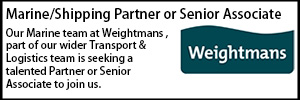




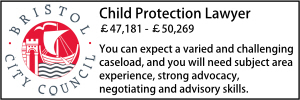


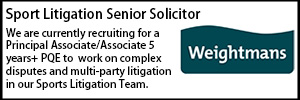












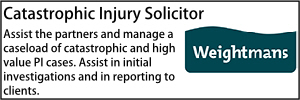






























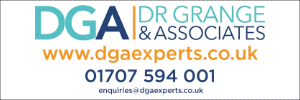
















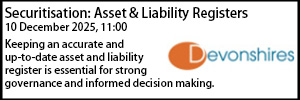







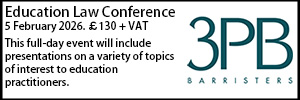









 The Employment Rights Bill Conference - Westminster Insight
The Employment Rights Bill Conference - Westminster Insight 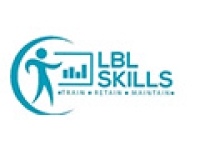 First Aid Level 3 - LBL Skills
First Aid Level 3 - LBL Skills  Capsticks Housing Diploma
Capsticks Housing Diploma  Education Law Conference - 3PB
Education Law Conference - 3PB  Annual Planning Seminar 2026 - No.5 Barristers
Annual Planning Seminar 2026 - No.5 Barristers 